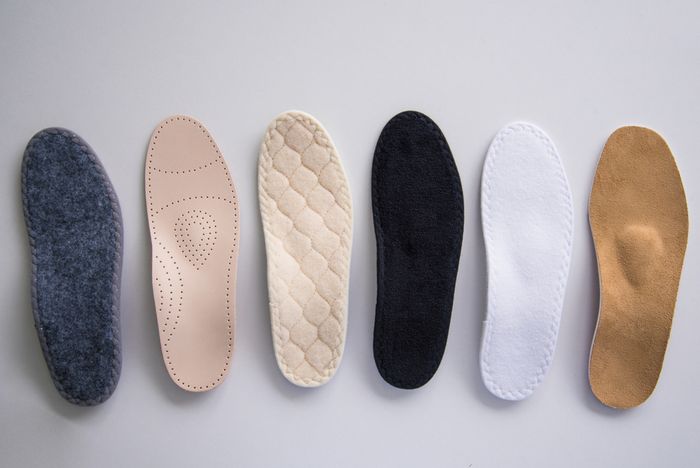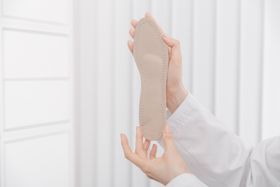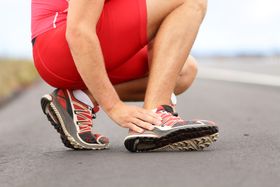Different Types of Custom Orthotics
Updated January 30, 2024.

Orthotics are special heel or shoe inserts prescribed by a doctor to treat foot, leg, hip, or back problems and relieve any pain and discomfort that arises. These orthotic devices tend to provide more cushion and support than a shoe can. Orthotics come in various sizes and shapes and include shoe inserts, arch supports, footpads, ankle braces, and all other similar items.
» Unsure how to navigate the different types of orthotics? Browse Upstep's range of custom orthotics to get started
The Difference Between Insoles and Orthotics
Both insoles and orthotics are useful in treating foot problems, and people often use the terms interchangeably. However, there is a slight difference between the two as they work differently for different individuals based on their specific needs.
Quite simply, one can say insoles form a subset of orthotics. They are foam inserts placed in your shoe to cushion the foot and support the arch. Orthotics are above and beyond that and include insoles, toe pads, braces, and arch supports that are used to address different foot conditions.
Again, it may be important to point out that while insoles are generic and can be purchased over the counter, orthotics are generally custom-made and designed to fit the foot. Again, while insoles can last up to 6 months, orthotics can last for five years.
» Explore the top-rated insoles for flat feet, endorsed and reviewed by professionals
Different Types of Orthotics
All custom orthotics differ from generic insoles in that they are designed to optimize your specific foot's function. While some offer mostly protection, other types of orthotics offer protection and functional control. Thus, depending on the foot problem, there are different types of custom orthotics.
Generally, there are 3 different types of orthotics, all made from different materials, and they are:
1. Functional (Rigid) Custom Orthotics
Functional orthotics are made from hard materials such as carbon fiber or plastic. Consequently, they are long-lasting, durable, and tend not to change shape. Functional orthotics provide additional support to the foot and are specifically designed to control the motion of foot joints below the ankle joint and improve foot and ankle mobility.
They are ideal for managing foot conditions such as:
- Arthritis
- Hallux limitus/rigidus (inflamed, sore, and stiff toe joints)
- Pes Plano valgus (collapsing arches/flat feet)
- Cavus foot (high arches)
- Limb-length discrepancies
- Bunion deformities
- Plantar fasciitis
- Neuromas
- Neuromuscular conditions
- And more
Some orthotics address specific medical issues like complex foot deformities, imbalance, or back problems. These medically prescribed orthotics are sometimes combined with orthopedic footplates or foot and ankle braces.
2. Accommodative Custom Orthotics
Accommodative orthotics are made up of soft and well-cushioned materials. They reduce the impact of standing and walking, reduce shear forces on the sole, and redistribute and balance weight across the foot.
They are effective in managing the following conditions:
- Diabetic wounds
- Arthritis
- Deformed feet.
They are also ideal for minor complaints or to correct functional issues.
3. Semi-rigid Custom Orthotics
Semi-rigid orthotics allow you to enjoy the best of both worlds as they are made from both soft and rigid materials. Its composite structure makes for better balance and can help relieve pressure and absorb shock.
Semi-rigid orthotics are often recommended for foot issues caused by arthritis or diabetes. They are used to treat flatfoot and in-toeing or out-toeing disorders in children. Athletes also use them to prevent pain, especially during training or competition.
Other Types of Custom Orthotics
Children's Orthotics
These provide biomechanical support. They also help restore the natural walking pattern by treating foot deformities and stabilizing the foot from an early age. They can be changed regularly as the child grows.
Sport-Related Orthotics
These aim to meet specific sport-related needs. In some cases, they optimize the biomechanical alignment of the body and improve sports performance, while in others, they help prevent injury. They can also improve energy transfer between the body and the foot. Athletes involved in edge-control and multidirectional sports, like skiing and skating, often use special custom orthotics.
Over-the-Counter (OTC) Orthotics
These one-size-fits-all orthotics may help you with minor conditions. However, they can also worsen the situation as they are not designed for your specific needs.
» Still not convinced orthotics can help you? Read the review for standing and walking insoles
What Type of Orthotics Do You Need?
From posterior tibial tendonitis to plantar fasciitis, metatarsalgia, flat feet, and more, the choice of orthotic will depend on the exact condition and the way the foot has been affected.
Invariably, the kind of orthotics you need is a function of your foot issue, and how much improvement may have resulted from other treatments. Consult with the experts at Upstep to determine the best type of orthotics based on your foot issues, lifestyle, and personal needs.








